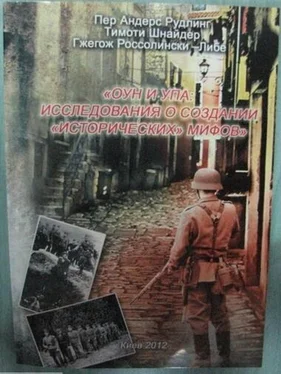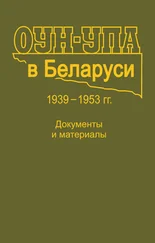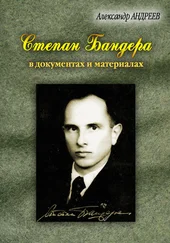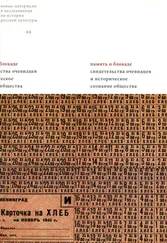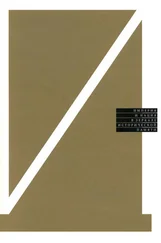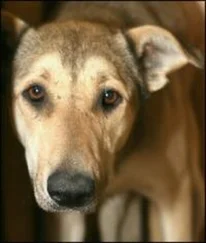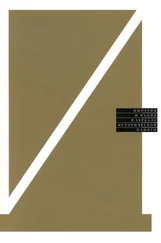Ukranski narodzie. .Ukrainian nation.
Gdzie San, gdzie Karpaty…….. From the river San, to the Carpatians,
gdzie Krym, gdzie Kauka …………… From the Crimea to the Caucasus
Ukraina — Ukraincom…………………. Ukraine for the Ukrainians, a
wszystkim przybledom — precz! …….All aliens must go!
After (the Polish translation) in ibid., 2: 1294. Grzegorz Motyka, cites the following OUN march: “Death, death, death to the Poles/Death to the Moscow-Jewish commune/The OUN leads us into bloody battle. Each tormentor will face the same fate/ One gallow for Poles [Liakh] and dogs.” Grzegorz Motyka, Ukrai" ska partyzantka 1942–1960: dzialalnosc Organizacji Ukranskich Nacjonalistów i Ukranskiej Powsta" czej Armii (Warsaw: Instytut Studiów Politycznych PAN; RYTM, 2006), 54.
Bruder, “Den ukrainischen Staat,” 146.
Berkhoff, Harvest of Despair, 292.
Snyder, Reconstruction of Nations, 169.
Moshe Maltz, Years of Horrors — Glimpse of Hope: The Diary of a Family in Hiding (New York: Shengold, 1993), 147, entry for November 1944.
Ibid., diary entry for November 1943, 107.
Carynnyk, “Foes of our Rebirth”; Per A. Rudling, “Theory and Practice: Historical Representation of the Activities of the OUN-UPA,” East European Jewish Affairs, 36, no. 2 (2006): 163–189.
John-Paul Himka, “The Ukrainian Insurgent Army and the Holocaust,” paper prepared for the forty-first national convention of the American Association for the Advancement of Slavic Studies, Boston, November 12–15, 2009, 8.
“With the Poles gone and the Soviets approaching, UPA made a decsion to fi nd the remaining Jewish survivors and liquidate them. As the Germans had taught them, they made assurances to Jews that they would not harm them anymore, they put them to useful work in camp-like settings, and then they exterminated them. These murders took place at the same time OUN was trying to make overtures to the Western Allies (as were the East European collaborationist regimes.). What is absolutely clear, however, is that a major attempt was launched at this time to eliminate Jewish survivors completely.” Ibid., 27.
Weiner, Making Sense of War, 264, citing interrogation of Vladimir Solov’ev, TsDAHO Ukrainy, f. 57, op. 4, d. 351, l. 52. On UPA murder of Jews, see Shmuel Spector, The Holocaust of Volhynian Jews, 1941–1944 (Jerusalem: Yad Vashem and the Federation of Volhynian Jews, 1990), 268–273.
Threatened Poles sought help from the Germans, and in some cases, replaced local Ukrainians as police units. The UPA’s own records from spring 1944 show how the murder of Poles continued, now on the charges that the Poles collaborated with the Gestapo. One UPA document, for the period March 13–April 15, 1944, reports 298 Poles in 19 villages were killed, many farmsteads burnt down, but a fraction of the OUN-UPA murders at the time. “Zvit s protypol’stkykh aktiv,” Postii, I. V. 44, TsDAVO, f. 4620, op. 3, spr. 378, ll. 43–44. On the OUN(b)-led UPA murder of Jews in Galicia during this period, see Himka, “The Ukrainian Insurgent Army and the Holocaust,” 12–17.
Motyka, Ukrai" ska partyzantka, 295–297.
Himka,“The Ukrainian Insurgent Army and the Holocaust,” 28.
According to the most extensive study of the OUN-UPA’s anti-Polish campaign, the number of Polish victims reach 130,800 when including the victims whose names could not be established. Ewa Siemaszko, “Bilans Zbrodni,” Biuletyn instytutu pamieci narodowej, no. 7–8 (116–117) (July — August 2010): 93.
Motyka, Ukranska partyzantka, 346–347. Mixed families were quite common in the Polish-Ukrainian borderlands, where the custom was that boys inherited nationality after their father, girls after their mothers. Kresy literature contains many testimonies of murders within mixed families. Ewa and Wlodys" aw Siemaszko have registred forty-five victims of intrafamily killings in Volhynia alone. Most of the victims are known by surname. Siemaszko and Siemaszko, Ludobójstwo, 2: 1059, table 13.
Andrii Bolianovs’kyi, “Ivan Hryn’okh — Providnyyi diach ukrains’koho pidpillia,” in Ivan Hryn’okh, Boh i Ukraina ponad use, ed. and introduction by Oleksandr Panchenko (Hadiach: Vydavnytstvo “Hadiach,” 2007), 64–65. 120. TsDAVO Ukrainy, f. 4628, op. 1, d. 10, ll. 170–179, in Vorontsov, “OUN-UPA,” 229.
Pohl, Nationalsozialistische Judenverfolgung in Ostgalizien, 376; Frank Golczewski, “Shades of Grey: Refl ections on Jewish-Ukrainian and German-Ukranian Relations in Galicia,” in Ray Brandon and Wendy Lower, eds., The Shoah in Ukraine: History, Testimony, Memorialization (Bloomington: Indiana University Press, 2008), 143.
Bruder, “Den Ukrainischen Staat,” 57; Friedman, “Ukrainian-Jewish Relations, ” 195; Berkhoff and Carynnyk, “The Organization of Ukrainian Nationalists,” 150; Breitman and Goda, Hitler’s Shadow,74, 76.
Himka,“The Ukrainian Insurgent Army and the Holocaust,” 28.
Friedman, “Ukrainian-Jewish relations,”189.
Spector, Holocaust, 271; Weiner, Making Sense of War, 263; Snyder, The Reconstruction of Nations 170; Dmytro Rybakov, “Marko Tsarynnyk: Istorychna napivpravda hirsha za odvertu brekhniu,” Levyi bereh, November 5, 2009. http://lb.com.ua/article/society/2009/11/05/13147_marko_tsarinnik_istorichna.html (accessed November 6, 2009).
Spector, Holocaust, 279; Mykhailo V. Koval’, Ukraina v druhii svitovyi i velykyi vitchyznianyi viinakh, 1939–1945 rr., (Kyiv: Dim Al’ternatyvy, 1999), 154.
Interrogation of activist Mykhail Dmitrievich Stepaniak, HDA SBU, f. 6, d. 1510, tom 1, l. 54. When working with Soviet interrogations, it is critical to keep in mind that the Soviets had special interests in demonstrating the OUN-UPA’s German connections. Yet, they confi rm a picture, borne out of other evidence, that Nazi Germany was but a secondary enemy of the OUN and UPA.
Ibid., ll. 71–72.
Ibid., l. 61.
Report from Soviet agent “Iaroslav” to the deputy director of the third department of the USSR People’s Commissariat of Defense Chief Counterintelligence Directorate “SMERSH” (Glavnoe upravlenie kontrrazvedki SMERSh GUKR-NKO, “Smersh,”) Nov. 23, 1944, HDA SBU, f. 13, sbornik 372, tom 5, l. 25.
Ivan Katchanovski, “Terrorists or National Heroes?” See also Stepeniak fi le, HDA SBU, f. 6, d. 1510, tom 1, ll. 42, 54.
Special resolution passed by the Third Congress of the OUN(b) in February 1943, TsDAVO, f. 3833, op. 1, spr. 102, ark. 1–4. Thanks to Marco Carynnyk for this reference. See also Motyka, Ukranska partyzantka, 117, n. 47.
The Second Congress of the OUN(b) issued detailed instructions that the fascist salue should be executed by raising the right arm “slightly to the right, slightly above the peak of the head,” while exclaiming “Glory to Ukraine!” (Slava Ukraini!), to which fellow members responded “Glory to the Heroes!” (Heroiam Slava!). This section was omitted from the republished resolutions of the Second Congress. Compare, for instance, OUN v svitli postanov Velykykh Zboriv (n.p.: Zakordonni Chastyny Orhanizatsii Ukrains’kykh Nationalistiv, 1955), 44–45, with the original 1941 publication, TsDAHO, f. 1, op. 23, spr. 926, l. 199 (Postanovy II. Velykoho Zboru Orhanizatsii Ukrains’kykh Nationalistiv, 37), cited in Rossoli#ski-Liebe, “The ‘Ukrainian National Revolution’ of 1941,” 90.
Читать дальше
